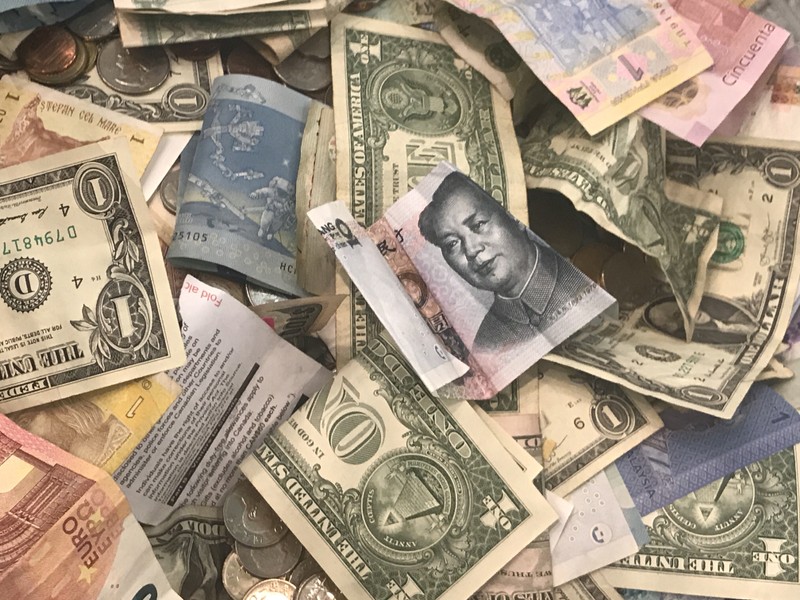
U.S. dollars and other world currencies lie in a charity receptacle at Pearson international airport in Toronto, Ontario, Canada June 13, 2018. REUTERS/Chris Helgren
October 2, 2019
By Tommy Wilkes
LONDON (Reuters) – The U.S. dollar rose on Wednesday after disappointing manufacturing data knocked it off two-year highs, while the euro clung to levels above $1.09.
U.S. manufacturing contracted at the fastest pace in more than a decade in September, making the United States the latest country to suffer a manufacturing downturn amid a trade war between Washington and Beijing.
Many analysts, however, say the dollar’s higher yield and the relative strength of the U.S. economy should make its setback temporary. Non-farm payrolls data due on Friday should give more insight into the health of the U.S. economy.
The dollar index, which measures the it against a basket of other currencies, climbed 0.2% to 99.353 <.DXY> after reaching 99.667 on Tuesday, a 29-month peak, before the manufacturing data was released.
The euro fell 0.2% to $1.0915 <EUR=EBS> but was above Tuesday’s two-year low of $1.0879.
“Yes, U.S. manufacturing is disappointing, but it’s no more disappointing than the euro zone PMIs (Purchasing Managers’ Index surveys) we saw,” said Michael Hewson, analyst at CMC Markets.
Hewson said weakness in U.S. manufacturing would have to spill over into services before it had much impact on monetary policy and the outlook for the dollar.
Even with more rate cuts, the dollar is still the highest-yielding currency among developed markets. The U.S. economy has also held up well, so far.
“We’ll need to wait for tomorrow’s non-manufacturing index for a broader view of how fast the economy overall is losing momentum, and we’ll have to go on waiting if we want cast-iron evidence that recession, like winter, is coming,” said Societe Generale’s strategist Kit Juckes.
(GRAPHIC – Euro vs U.S. dollar: https://tmsnrt.rs/2opJuzd)
AUSSIE SLIDE
The Australian dollar fell 0.3% to $0.667 <AUD=D3>, its weakest since early 2009, as investors dumped currencies linked to the outlook of the global economy. The Aussie had reached a decade low on Tuesday after the Reserve Bank of Australia cut rates to a record low.
The Japanese yen strengthened 0.1% to 107.64 <JPY=EBS>, reflecting investor demand for safer assets after the U.S. data heightened concerns about the health of the global economy.
The Swiss franc fell after Swiss National Bank governing board member Andrea Maechler said expansive monetary policy was critical to help counter global uncertainty.
The franc dropped 0.6% against the euro <EURCHF=EBS> to 1.0915 francs and was last down 0.7% against the dollar <CHF=EBS> at 1 franc.
The pound sank 0.5% to $1.2247 <GBP=D3> amid doubt over whether Prime Minister Boris Johnson’s final Brexit offer to the European Union would be well-received by Brussels.
(Editing by Larry King)

